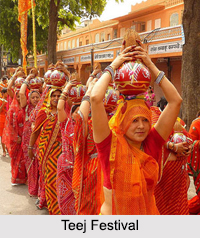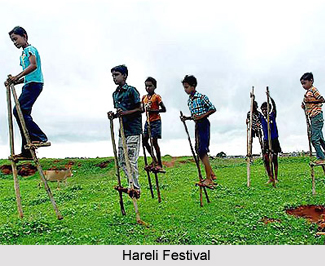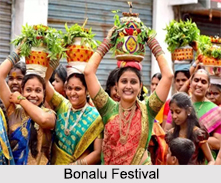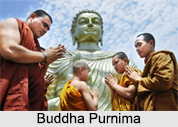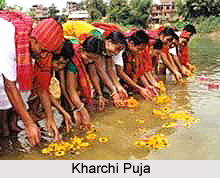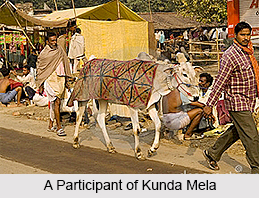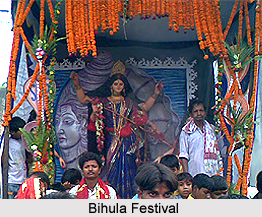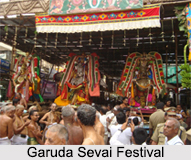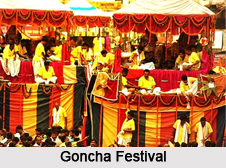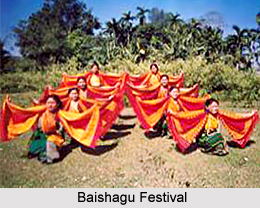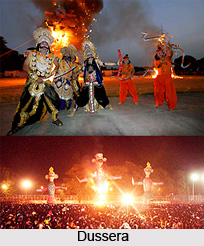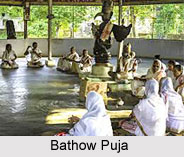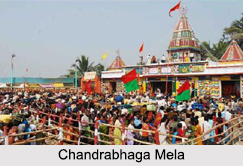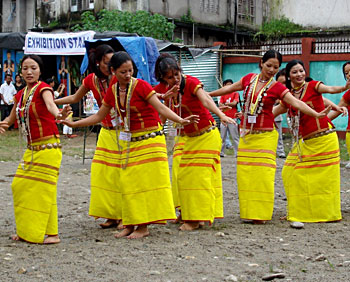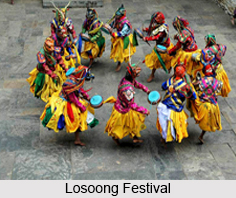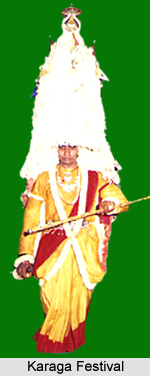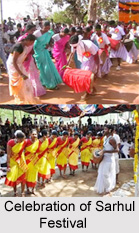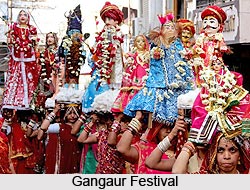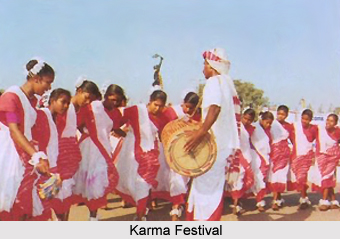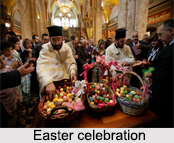 Religious Festivals of North India bring the long lost flavors of religiosity ascertained to Northern states of India. The people of North India celebrate several fairs and festivals during the year. Starting from January to February, each day is devoted to some Gods or Goddesses. The Deepawali, Holi and Navaratri are the most popular festivals which are celebrated with much pomp and show and by a big number of people. Sweets, fair, new dresses, home beautification, meeting family and friends are the regular things to see in all the festivals here.
Religious Festivals of North India bring the long lost flavors of religiosity ascertained to Northern states of India. The people of North India celebrate several fairs and festivals during the year. Starting from January to February, each day is devoted to some Gods or Goddesses. The Deepawali, Holi and Navaratri are the most popular festivals which are celebrated with much pomp and show and by a big number of people. Sweets, fair, new dresses, home beautification, meeting family and friends are the regular things to see in all the festivals here.
Some of the most popular Religious Festivals of North India are as follows:
Easter: A very unique and fortunate day for the Christians, Easter Sunday is celebrated in April to mark the rebirth of Jesus Christ upon his death on Good Friday. The day holds lots of spiritual significance for the Christians and is celebrated with great dedication. People buy new clothes, decorate eggs and arrange tasty dishes to mark the carnival of the day. The Easter Basket is prepared filled with chocolates, decorated eggs and many other things and brought to the church to be blessed by the Father.
Maha Shivratri: Amongst the biggest days in a Hindu calendar year, Maha Shivratri is celebrated as the day Lord Shiva married Goddess Parvati. This sacred celebration in India is celebrated on the 14th or 15th day of the month of February with devotees beating to the temples to put forward their prayers. The festivities are marked with all day fasting and all night singing and dancing. 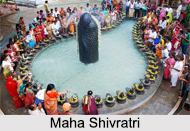
Ramnavami: Ramnavami is celebrated as the birth anniversary of Lord Rama, son of King Dasaratha and Queen Kausalya of Ayodhya. Rama is believed to be the 7th incarnation of Lord Vishnu. Ramnavami also marks the last day of Chaitra Navratri celebrations which continues for 9 days. As Lord Rama personifies morality, goodness and truth, this festival holds a significant place among Hindus and is celebrated with great religious fervor. It is also known as "Chaitra Masa Suklapaksha Navami". Ramnavami falls on the 9th lunar day of the bright fortnight of Chaitra, a month in Hindu calendar, and is observed with great sanctity and fasting. It is a 9 day festival, coinciding with Vasant Navaratri. Devotees stay awake on the 9th night, in anticipation of Lord Rama`s birth and rock his image in cradles to celebrate his birth. For this festival, temples are decorated exquisitely, the image of Lord Rama is richly adorned and the Ramayana is read out in temples. Traditional worship begins with chanting Vedic mantras dedicated to Lord Vishnu, and offering flowers and fruits to the God. Excerpts from the "Ramacharitamanas", praising Lord Rama, are also recited. Lord Rama`s devotees fast for 9 days with fruit and milk, whilst some fast on the 9th day only. This is one of the 5 Mahavratas observed since ancient times. Ramnavami celebrations are popular in Uttar Pradesh. 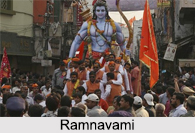
Janmashtami: It is the festival celebrating the birth of Lord Krishna. Ages ago, Lord Krishna took birth in Mathura to prove that good is always powerful than immorality. Devotees keep fast on this day and sing devotional songs in the praise of the Lord.
Eid-al-Fitr (Ramadan): One of the chief religious festivals in India, Eid and the month long fasting former to that which is known as "Ramzan" is enthusiastically celebrated by millions of Muslims all across the country. Cities such as Lucknow, Delhi and Hyderabad observe cheerful celebrations and display during Eid.
Deepawali: The celebration of festivals, Deepawali is one of the broadly celebrated cultural festivals in India, marked across communities and regions. The festival of light marks the home coming of Lord Rama from his exile to his kingdom. The festival sees households decorated in stunning electronic lights along with diyas and rangolis. In the evening, there is a magnificent puja of Goddess Lakshmi, the harbinger of wealth with crackers burnt after it to mark the end of the festival. Deepwali celebrations are best seen in the northern parts of the country such as UP, Rajasthan, Punjab and Delhi.
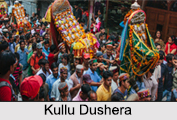 Buddha Purnima: The principal day in the life of a Buddhist, Buddha Purnima is celebrated across the Buddhist world as the day of birth, enlightenment and death of Gautam Buddha. India, the land of Gautam Buddha"s enlightenment and death sees great celebration of his life and teachings by the Buddhist temples and followers in the country. Spiritual Buddhists assemble around at their nearest temples with flowers and candle sticks, offering prayers and singing hymns. Bodh Gaya in Bihar is the best place to witness the enchanting celebrations of Buddha Purnima in India.
Buddha Purnima: The principal day in the life of a Buddhist, Buddha Purnima is celebrated across the Buddhist world as the day of birth, enlightenment and death of Gautam Buddha. India, the land of Gautam Buddha"s enlightenment and death sees great celebration of his life and teachings by the Buddhist temples and followers in the country. Spiritual Buddhists assemble around at their nearest temples with flowers and candle sticks, offering prayers and singing hymns. Bodh Gaya in Bihar is the best place to witness the enchanting celebrations of Buddha Purnima in India.
Gurupurab: Gurupurab is a different celebration for the Sikhs and the Punjabis. Birthdays of priest Sikh Gurus, Guru Nanak and Guru Gobind Singh and the martyrdom of Guru Teg Bahadur and Arjun Dev is remembered on these days. The first full moon night falling after Diwali is the birthday of the first Sikh Guru, Guru Nanak. The event is celebrated with great enthusiasm. They burn crackers and beautify their houses with lights.
Naag Panchami: Panchami means the fifth and on the fifth day of the bright half of Shravana, the nagas (serpents) are worshipped, since snakes symbolize energy and prosperity. Snake-worship is pre-Aryan and was incorporated into the Aryan religion at an early stage. In the rainy month of Shravana many snakes come out of their holes and a large number of human and cattle deaths are caused by snakebites. Thus, this worship must have been started to appease these snakes. This is an ancient festival and on Ashvina Shukla Panchami, people worshiped images of nagas and Indrani. These images were placed on a platform and on a white cloth. The images of nagas were bathed with water, clarified butter and milk whereas the images of Indrani were washed with water only. According to Agni Purana, snakes are to be worshiped on the Panchamis of Shravana, Bhadrapada, Ashvina and Kartika. Such worship is performed in the honor of Takshaka, the king of serpents and this festival is called Takshaka Yatra.
Dusshera of Kullu: Dusshera is celebrated all around India, but not like that in Kullu. The celebrations start in Kullu when the celebrations of India for Dusshera end. The presiding deity of Kullu, Raghunathji is taken out on this day and around 600 deities of Himachal come to pay respect to this idol. Vast colorful processions mark the occasion and by the end of the festival the Lord is bathed in the Beas River and then taken back to its main temple. Singing and Dancing and worshipping are the core of this festival celebrated with pomp and show. 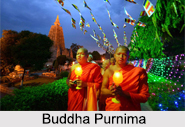
Rasayatra: This is an annual festival of Lord Krishna. It is celebrated in various parts of India in the month of Karthik (October-November) upon the sun`s entrance into Libra. Rasayatra celebrates the Krishna`s nocturnal dances with the Gopis. The dance in the circular form signifies the dance of the planets round the sun.
During the Krishna Saradiya Rasayatra the deities of Vrindavan are exquisitely decorated in white. As the moon is auspicious on this day Krishna Lila dramas are enacted. The devotees leave pots of sweet rice exposed to the full moon for the whole night, to turn the sweet rice into amrita. During the time of Rasayatra devotional services are performed. One of the most important of these ceremonial functions is called Urja-vrata. Urja-vrata is observed in the month of Karthik especially in Vrindavan. In Vrindavan there is a specific program for temple worship of the Lord in His Damodara form.
`Damodara` refers to Krishna`s being bound with rope by His mother, Yashoda. It is said that just as Lord Damodara is very dear to His devotees, so the month known as Damodara or Kartika is also very dear to them. The devotional service is also performed at Mathura. This system is still followed by many devotees. The followers go to Mathura or Vrindavan and stay there during the month of Kartika specifically to perform devotional services during this period.
